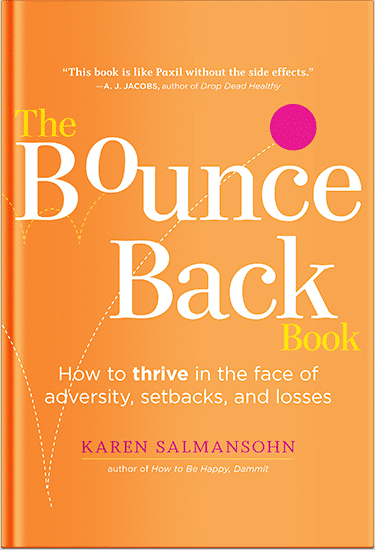 Neck pain after a car crash is sneaky. The collision seems “minor,” you feel okay, then the next morning the head won’t turn, sleep’s a mess, and daily tasks take twice the energy. That lag creates a perfect storm: people downplay symptoms, delay care, and toss the paperwork in a drawer until the bills and forms pile up.
Neck pain after a car crash is sneaky. The collision seems “minor,” you feel okay, then the next morning the head won’t turn, sleep’s a mess, and daily tasks take twice the energy. That lag creates a perfect storm: people downplay symptoms, delay care, and toss the paperwork in a drawer until the bills and forms pile up.
Here’s the honest truth that gets lost in the noise: health comes first, but how recovery is documented and communicated in the early weeks often shapes both treatment options and future costs. That’s where a claims-savvy attorney can be more than a courtroom figure; the right one becomes a calm project manager for the medical-legal details—so recovery isn’t derailed by missed steps or avoidable gaps.
Below is a health-centered guide to when legal help actually matters, how to choose someone who understands soft-tissue injuries like whiplash, and what to expect if you decide to bring one on board.
Why Whiplash Is Easy to Underestimate
Whiplash is a soft-tissue injury. The neck is forced through a fast back-and-forth “S-curve,” loading muscles, ligaments, and facet joints. Symptoms often peak 12–48 hours later, which tricks people into skipping the very steps that smooth recovery: early evaluation, a gentle movement plan, and simple documentation.
Common signs include limited range of motion, headaches starting at the base of the skull, shoulder/upper-back soreness, sleep disruption, and sometimes tingling or heaviness in an arm. When pain limits normal head turns or radiates, professional assessment isn’t optional—it’s the next right step.
Health-first takeaway: quick screening, light movement (not full immobilization), and a short daily symptom log usually beat a wait-and-see approach.
When a Whiplash Claims Lawyer Actually Helps
Many people start by reading about car accident claims for whiplash from Edwards & Patterson Law to understand what records to keep and how timing affects options—without turning recovery into a second job. That single, non-promotional step (learning what to document and when) can prevent the common snags that slow approvals or shrink a settlement later.
Where a claims-savvy lawyer moves the needle:
- Early strategy on records. Visit summaries, PT plans, imaging (if ordered), prescriptions, and brief function notes create a coherent timeline. A good attorney shows exactly what to keep—and what’s noise.
- Communication cadence. Portal messages to clinicians such as “still getting headaches after desk work” show continuity of care. That single sentence can matter months later.
- Insurer friction. Soft-tissue injuries don’t always show on scans. When adjusters minimize symptoms, a lawyer frames the full picture—sleep loss, driving limits, work impact—so it isn’t reduced to a line item.
- Pacing and patience. Quick offers rarely reflect long-tail symptoms. A steady hand helps avoid trading long-term needs for short-term relief.
How a Claims Lawyer Improves a Whiplash Case
A good attorney isn’t extra noise; they create a path. Here’s what that looks like in the real world:
- Intake & Triage (Week 1–2): Clarifies crash details, symptom onset, first appointments, and any missed work. You get a one-page case timeline so medical notes and life events line up.
- Evidence Map: Lists what’s worth saving (visit summaries, PT plans, portal messages, receipts) and what’s not. You’ll know where each item goes and who needs it.
- Medical Coordination (No Over-treating, No Under-reporting): Your symptom log gets tuned to function (“drive 20 min → neck 7/10”), not drama. If your clinician updates the plan, the paper trail updates the same week.
- Insurer Contact & Boundaries: The lawyer handles adjuster calls, sets response timelines, and keeps you off recorded statements you don’t have to give. You focus on healing.
- Negotiation With a Clock, Not a Cliff: No rushing into quick offers while symptoms are still evolving, and no endless drift. You get target dates for demand, reply, and counter windows.
- Resolution You Can Live With: Settlement terms, medical liens, and final paperwork are explained in plain English. You sign once you understand—not before.
Choosing the Right Attorney for Soft-Tissue Injuries
What to look for:
- Soft-tissue fluency. They talk range of motion, delayed onset, and return-to-function—not just buzzwords.
- Document-light systems. Accepts digital visit summaries, phone-note logs, and portal screenshots.
- Clinician alignment. Respects your provider’s plan; no pressure to over-treat.
- Clear phase plan. Explains assessment → demand → negotiation → (if needed) litigation, with rough timelines.
Fees, without the mystery: Most personal-injury firms work on contingency—they’re paid a percentage only if money is recovered. Ask two things up front:
- The percentage and how it changes if a lawsuit is filed.
- Case costs (records fees, expert opinions) and when they’re paid.
When to call:
Touch base once you have a diagnosis or a working treatment plan and you’ve kept a few days of notes. You’re not “suing”; you’re preventing gaps in the record. If you recover fast, great—nothing lost. If you don’t, you’re not starting from zero months later.
So—Do You Really Need a Lawyer?
Not everyone does. Many people heal with conservative care, a steady routine, and zero paperwork drama. But if symptoms linger, work and family duties suffer, or bills start to stack up while insurers downplay a soft-tissue injury, having a claims-savvy attorney in the loop can be the difference between an orderly recovery and a chaotic one.
Think of it this way: the body needs time and smart movement; the process needs accuracy and consistency. A good lawyer doesn’t replace your clinician—they protect the story your clinician is working so hard to tell. That’s often the missing piece that keeps real life—sleep, driving, work, parenting—moving forward while the neck catches up.
P.S. Before you zip off to your next Internet pit stop, check out these 2 game changers below - that could dramatically upscale your life.
1. Check Out My Book On Enjoying A Well-Lived Life: It’s called "Your To Die For Life: How to Maximize Joy and Minimize Regret Before Your Time Runs Out." Think of it as your life’s manual to cranking up the volume on joy, meaning, and connection. Learn more here.
2. Life Review Therapy - What if you could get a clear picture of where you are versus where you want to be, and find out exactly why you’re not there yet? That’s what Life Review Therapy is all about.. If you’re serious about transforming your life, let’s talk. Learn more HERE.
Think happier. Think calmer.
Think about subscribing for free weekly tools here.
No SPAM, ever! Read the Privacy Policy for more information.
One last step!
Please go to your inbox and click the confirmation link we just emailed you so you can start to get your free weekly NotSalmon Happiness Tools! Plus, you’ll immediately receive a chunklette of Karen’s bestselling Bounce Back Book!


 Neck pain after a car crash is sneaky. The collision seems “minor,” you feel okay, then the next morning the head won’t turn, sleep’s a mess, and daily tasks take twice the energy. That lag creates a perfect storm: people downplay symptoms, delay care, and toss the paperwork in a drawer until the bills and forms pile up.
Neck pain after a car crash is sneaky. The collision seems “minor,” you feel okay, then the next morning the head won’t turn, sleep’s a mess, and daily tasks take twice the energy. That lag creates a perfect storm: people downplay symptoms, delay care, and toss the paperwork in a drawer until the bills and forms pile up.